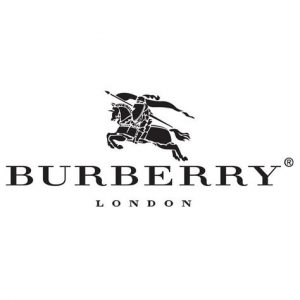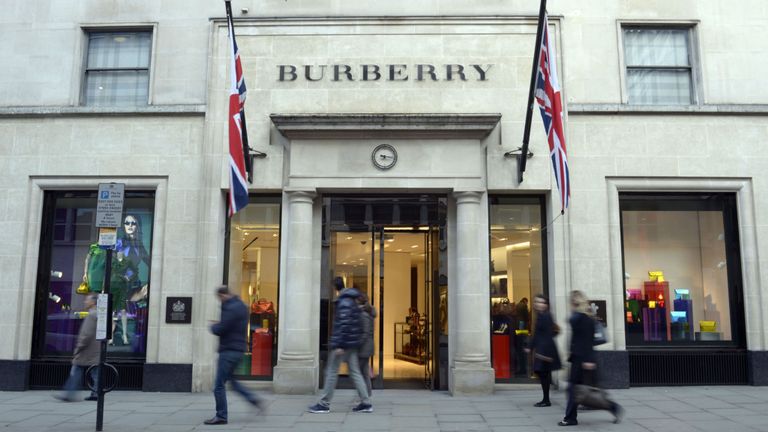Contents
Summary
Founded in 1856 Burberry is underpinned by founder Thomas Burberry’s passion for the outdoors. He invented the innovative rain-ready fabric gabardine to protect explorers from the elements and in doing so, created the foundation for the iconic Burberry trench coat which remains core to the business even today. Since then the fashion house moved on to ready-to-wear- outerwear- fashion accessories- fragrance- sunglasses and cosmetics. The company is currently listed on London Stock Exchange and is a constituent of the FTSE 100 Index. As a values-driven brand, Burberry is committed to creating the next generation of sustainable luxury and believe that diversity, equity and inclusion are essential to fulfilling its purpose. Fostering an inclusive culture where differences are valued and embraced enables us to be more creative, engaged and make a more meaningful contribution to the world around Burberry.
History
In 1856 Thomas Burberry established modern British luxury fashion brand Burberry in Basingstoke at the age of twenty-one, on the principle that the apparel he designed would protect people from the harsh weather. In 1879 he came up with apparel made with gabardine; it was breathable weatherproof rainwear which up until then had been heavy and uncomfortable.
Burberry patented Gabardine in 1888. As proof of its success- Norwegian polar explorer, zoologist and later recipient of the Nobel Peace Prize Dr Fritjof Nansen becomes the first recorded polar explorer to take Burberry gabardine to the poles when he sets sail for the Arctic Circle in 1893. In 1897 explorer Major F.G. Jackson wore Burberry gabardine when undertaking an expedition to Franz Josef Land.
That year the company ran a public competition to design a new logo for the brand. The winning entry was inspired by thirteenth and fourteenth-century armour on display at the Wallace collection in London. In 1908 air commodore Edward Maitland wore Burberry gabardine to travel from Crystal Palace to Russia in a hot air balloon and set the world’s long-distance overseas record and the British long-distance in-flight record. The fashion brand was on the route to success.
In 1909 Burberry opened the first Paris store at 8 Boulevard Malesherbes and the following year aviator Claude Grahame-White wore Burberry gabardine when he becomes the first person to fly between London and Manchester in less than 24 hours. In the years that followed- Norwegian Explorer Roald Amundsen and his team becomes the first people to reach the South Pole with a Burberry gabardine tent and clothing and British explorer Captain Robert Falcon Scott reached the South Pole wearing Burberry clothing and equipped with a Burberry tent.
The Tielocken coat invited by Thomas Burberry was patented. The predecessor to the trench coat… it proved to be popular among officers during WWI. The coat closed with a strap and buckle fastening and featured a single button at the collar. A year later and having had presence in London since 1891, Burberry moved to a larger premises in Haymarket. During World War I Burberry provided apparel and equipment to the armed forces. Each detail of the trench served a purpose: epaulettes displayed insignia- gun flap gave additional protection- D-rings were used to attach military equipment- and the storm shield allowed rain to run off efficiently. These features of a Burberry trench remain today.
After the war the trench became popular with civilians and the iconic Burberry check has been in use since… primarily as a lining for the trench. In 1919 HM King George V granted Burberry its first Royal Warrant as a Tailor. Per Harpers Bazaar: “The trench had become synonymous with adventure and utility, but it was Hollywood that made it glamorous. In the 1942 film Casablanca, Humphrey Bogart utters his famous line, “Here’s looking at you, kid,” while wearing a trench coat.” That’s not all! Burberry sponsored a record-breaking flight from Croydon to Cape Town in an aeroplane called “The Burberry.” Both aviators- Arthur Clouston and Betty Kirby-Green- wore Burberry.
During World War II Burberry supplied the British Army with military apparel and accessories including the trench coat. And also catered for Royal Air Force- Royal Navy- Royal Pioneer Corps- Officer Cadet Training Unit- and Auxiliary Territorial Service. Burberry simultaneously made civilian clothing during the Forties including raincoats- overcoats and suits. Burberry adapted the product category during the wart to include women’s siren suits which were designed to be worn in an air-raid.
Thomas Burberry retired in 1917 but remained on the Board of Burberrys Ltd until his death in 1926 at the age of ninety. In 1955 HM Queen Elizabeth II granted Burberry a Royal Warrant as a weather-proofer. Burberry was an independent family-controlled company until 1955 when the Great Universal Stores assumed ownership. By 1965- one in five coats exported from Britain was a Burberry product. During the Sixties- Burberry became legendary as a modern British luxury brand and held fashion shows in London- Paris- Milan- Brussels- Berlin and Tokyo.
Going forward- in 1972- Burberry acquired the factory in Castleford.. the home of the Burberry trench coat.. building on their manufacturing presence in the UK.. a legacy that continues today. There was no looking back. In 1990 Burberry was granted a Royal Warrant by HRH The Prince of Wales as an Outfitter and in 1999 the company name was changed from Burberrys to Burberry.
Burberry opened its first store on Bond Street London in 2001 cementing its status as an iconic global luxury fashion brand and this became the blueprint for Burberry’s global store network. In May 2001, Christopher Bailey joined Burberry as Creative Director and quickly rose through the ranks to become Chief Creative Officer in 2014 and CEO in 2017. However he left the brand in end-2018.
Burberry was listed on the London Stock Exchange following an initial public offering. In 2005 Burberry’s demerger from GUS plc- the company’s former majority shareholder- was complete. The modern luxury fashion brand is big on philanthropy. In 2008 The Burberry Foundation was launched- a philanthropic arm dedicated to helping young people realise their dreams and potential through the power of creativity. Burberry donates a percentage of annual group profit before tax to charitable causes.
That said Burberry continues to look at the future and evolving consumer needs. Art of the Trench- a website showcasing people wearing their Burberry trench coats- was launched. The aim was to provide a platform for the Burberry community to connect with each other… a visionary move a year prior to the rise of global social media platforms. In 2011 Burberry expanded e-commerce with the launch of a new transactional website serving forty-four countries.
“I think one of the things that makes Burberry different is that we’re always looking forward – experimenting, trying new things and pushing boundaries” says the team on the official website.
Sustainability is one of the pillars of the luxury fashion brand. In 2019 Burberry redesigned paper packaging to be made out of recycled coffee cups. Since launch, fifty-eight million coffee cups have been recycled into new Burberry packaging.
The current Creative Director is Daniel Lee “the man who had transformed Bottega Veneta from an insider’s luxury brand to an outsider’s hype beacon” per GQ. “Riccardo Tisci’s modernist sans serif Burberry was replaced by Lee’s more traditional, slightly village-y Burberry, with its neat edges and modest flicks. With it came the return of the 122-year-old ‘Equestrian Knight’ motif…”
Mission Statement
Burberry’s mission is to solidify its position as the preeminent British luxury brand by enhancing its global brand recognition and continuously refining its product offerings. The company seeks to maintain and elevate its iconic status through a blend of innovation and heritage, ensuring that its storied legacy remains relevant in today’s dynamic fashion landscape. By emphasizing its distinctive British identity and leveraging its renowned craftsmanship, Burberry aims to captivate both loyal customers and new audiences. This involves a strategic focus on creating high-quality, timeless products that embody the luxury fashion brand’s core values while also embracing modern design trends to meet evolving consumer preferences.
In addition to strengthening its brand presence, Burberry is committed to a more integrated approach to merchandising by increasing the proportion of products it manages directly rather than through third-party licenses. This shift enables the company to exert greater control over the quality, consistency, and presentation of its products, ensuring that every item reflects Burberry’s high standards and distinctive style. By consolidating its operations and reducing reliance on external partnerships, Burberry aims to deliver a more cohesive and refined customer experience. This approach supports the brand’s broader goal of dominating the British luxury market, reinforcing its reputation for excellence and innovation within the industry.
Vision
Burberry’s vision, rooted in Thomas Burberry’s “Open Spaces” manifesto, embodies the brand’s legacy of innovation and commitment to creativity. This vision reflects Burberry’s historical emphasis on pushing boundaries and creating opportunities for ingenuity to thrive. For Thomas Burberry, “open spaces” symbolized the unique qualities of gabardine, the revolutionary fabric he invented, which incorporated tiny pockets of air within its weave. This fabric not only transformed the fashion industry but also symbolized the freedom and resilience afforded to those who wore Burberry’s apparel.
The brand’s vision is inspired by its history of empowering pioneers like explorer Sir Ernest Shackleton and aviator Betty Kirby-Green, who relied on Burberry for their groundbreaking endeavors. This connection to adventure and the spirit of exploration reinforces the brand’s commitment to producing products that offer practicality, sophistication, and the promise of new possibilities. The concept of “open spaces” extends beyond fabric and clothing to symbolize a space for creative expression, discovery, and freedom.
Today, Burberry continues to leverage its heritage to deliver high-quality products and exceptional, immersive retail experiences. By embracing both tradition and forward-thinking creativity, the brand aspires to remain at the forefront of luxury fashion, combining technical innovation with timeless style. Burberry’s vision champions the harmonious blend of its storied past and an inspired future, making space for continued innovation and cultural relevance.
Products and Services
British luxury fashion house Burberry- headquartered in London- was established in 1856 by Thomas Burberry to create trench coats during World War I. Since then the fashion house moved on to ready-to-wear- outerwear- fashion accessories- fragrance- sunglasses and cosmetics.
Recognition and Achievements
Burberry is renowned for its quintessentially British luxury fashion, characterized by its distinctive design elements and storied heritage. Founded in 1856, the brand is perhaps most famous for its iconic trench coats, which were originally designed for military use and have since become a symbol of classic elegance and functional style. The trench coat, with its signature check lining and durable gabardine fabric, exemplifies Burberry’s commitment to both practicality and luxury. This commitment extends to other aspects of the brand, including its renowned check pattern—a classic design that has become synonymous with Burberry’s sophisticated aesthetic.
Key Team
Jonathan Akeroyd (CEO)
Riccardo Tisci (CCO)
Gerry Murphy (Chairperson)
Kate Ferry (Chief Financial Officer)
Orna NíChionna (Senior Independent Director)
Gemma Parsons (Company Secretary)
References
- Official website Burberry
- In the trenches at Daniel Lee’s Burberry debut GQ
- Burberry’s return to London GQ
- Burberry Fall 2023 RTW Vogue
- Facebook page of Burberry Facebook
- What did Daniel Lee’s Burberry debut look like? Vogue
- Instagram page of Burberry Instagram
- Daniel Lee’s first vision for Burberry is an ode to Britishness Vogue Business
- Twitter page of Burberry Twitter
- The Amazing Ways Burberry Is Using AI Forbes
- LinkedIn page of Burberry LinkedIn
- Inside Burberry’s Sustainability initiative Forbes
- Burberry purpose and values Burberry
- The Very British History of Burberry Harpers Bazaar
- Youtube channel of Burberry Youtube
- Burberry RTW Fall 2023 WWD
- Wiki page of Burberry Wikipedia
- Life at Burberry Burberry
- Burberry Revival Is On-Track Except In Europe Forbes





